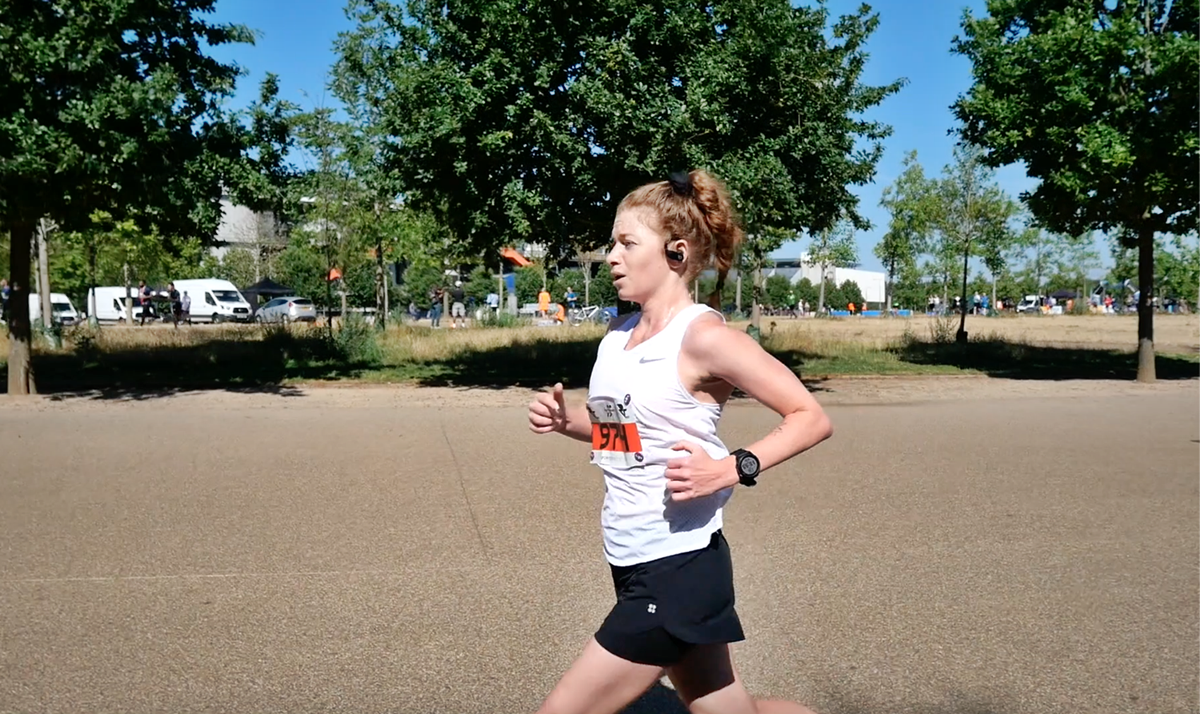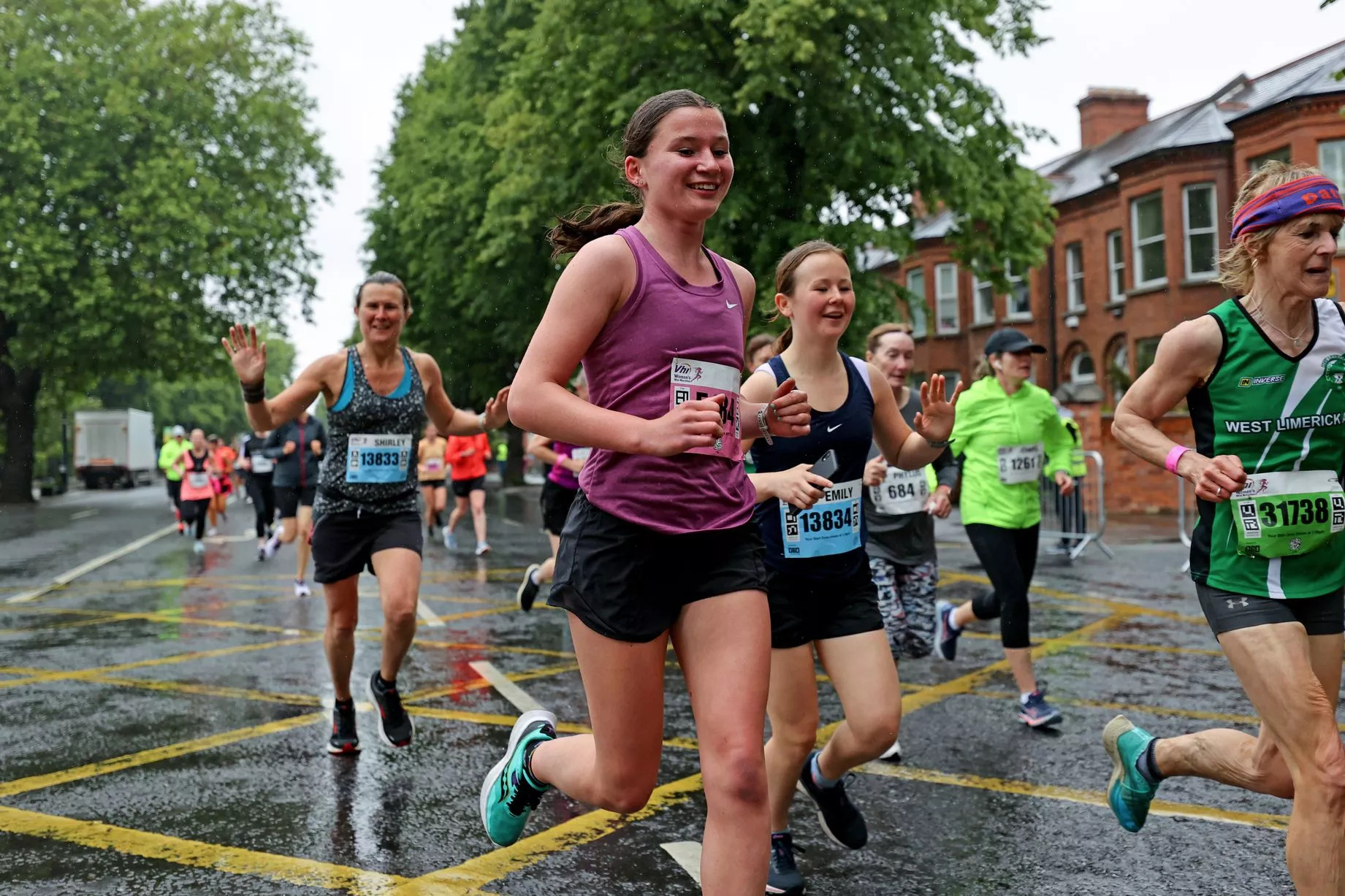

Featured
How To Train For 10K Run In 4 Weeks
Modified: August 21, 2023
Achieve your running goals with our featured guide on how to train for a 10K run in just 4 weeks. Start your journey towards success today!
Introduction
Training for a 10K run is an exciting and rewarding journey that requires dedication, perseverance, and a well-planned training program. Whether you’re a seasoned runner looking to set a new personal record or a beginner aiming to conquer your first 10K, this article will provide you with the guidance and knowledge to train effectively in just 4 weeks.
A 10K race, also known as a six-mile run, is a popular distance for both recreational and competitive runners. It offers a perfect balance between challenging yourself and achieving a sense of accomplishment. By following a structured training plan, you’ll be able to build stamina, increase your endurance, and improve your overall fitness level.
This article will guide you through each phase of your 4-week training program, starting with goal setting and assessing your current fitness level. From there, we’ll delve into designing a training plan that includes base building, endurance training, speed and interval workouts, and tapering in the final week before the race. We’ll also provide strategies for race day and emphasize the importance of recovery and rest.
It’s important to note that while training for a 10K in just 4 weeks is possible, it requires a commitment to consistency and listening to your body. If you’re new to running or have been inactive for a while, it’s advisable to consult with a healthcare professional before embarking on any new exercise program.
So lace up your running shoes, get ready to push your limits, and let’s dive into the world of training for a 10K run in just 4 weeks.
Setting a Goal
Before starting any training program, it’s essential to set a clear and achievable goal for your 10K race. Having a goal in mind will provide you with motivation and a sense of purpose throughout your training. When setting your goal, consider your current fitness level, previous running experience, and any time constraints that may affect your training schedule.
Your goal may vary depending on your individual circumstances and preferences. It could be completing the 10K race within a certain time frame, improving your personal best, or simply finishing the race strong. Whatever your goal may be, make sure it is realistic and aligns with your abilities.
SMART goal setting is a useful framework to follow. SMART stands for Specific, Measurable, Achievable, Relevant, and Time-bound. Let’s break down each component:
- Specific: Clearly define your objective. Instead of aiming to “finish the race,” set a specific target time or pace.
- Measurable: Your goal should be quantifiable so that you can track your progress. For example, completing the 10K in under 60 minutes or running at an average pace of 6 minutes per kilometer.
- Achievable: Ensure that your goal is within reach given your current fitness level and training timeframe. It’s important to challenge yourself without setting unrealistic expectations.
- Relevant: Make sure your goal aligns with your personal interests, motivations, and aspirations. It should be something that inspires and excites you.
- Time-bound: Set a deadline for achieving your goal. This will help you stay focused and committed to your training program.
By setting a goal using the SMART framework, you’ll have a clear target to strive towards. It will provide you with a sense of direction, allow you to track your progress, and ultimately increase your chances of success. Remember that goals can be adjusted and modified as you progress through your training program, so don’t be afraid to adapt as needed.
Assessing your Current Fitness Level
Prior to starting your 10K training program, it’s crucial to assess your current fitness level. This assessment will help you determine your starting point, understand your strengths and weaknesses, and tailor your training plan accordingly. Here are some key factors to consider when assessing your fitness:
- Running Experience: Evaluate your previous running experience, including any races you have completed and the distances you have run. This will give you an idea of the level of endurance and running technique you already possess.
- Cardiovascular Fitness: Assess your cardiovascular endurance by engaging in a fitness test such as a timed mile run or a brisk walk/run test. This will give you an indication of your current aerobic capacity and help you gauge your baseline fitness level.
- Strength and Flexibility: Consider your overall strength and flexibility, as these play a crucial role in injury prevention and efficient running technique. Assess your core strength, leg strength, and flexibility to identify any areas that may need improvement.
- Current Training Schedule: Evaluate your current exercise routine, including the frequency, duration, and intensity of your workouts. It’s important to know how much time you can dedicate to your 10K training and how it aligns with your other commitments.
- Injuries or Health Conditions: Reflect on any past or current injuries, as well as any health conditions that may impact your training. It’s essential to be aware of any limitations or precautions you need to take to ensure a safe and effective training program.
Based on your assessment, you can identify areas that require improvement and incorporate them into your training plan. If you’re a beginner or haven’t been active for a while, it’s advisable to start with a slower and more gradual training approach. This will allow your body to adapt and reduce the risk of injuries.
Remember, everyone’s fitness level is unique, and there is no right or wrong starting point. The important thing is to be honest with yourself and set realistic expectations. By understanding your current fitness level, you can design a training program that aligns with your abilities and sets you up for success.
Designing a Training Plan
Now that you’ve set a goal and assessed your current fitness level, it’s time to design a training plan that will help you achieve your desired outcome. A well-structured and progressive training plan is essential to improve your endurance, build strength, and prevent overtraining. Here are the key components to consider when designing your 10K training plan:
- Weekly Mileage: Determine how many days per week you can dedicate to running and establish a realistic target weekly mileage. Gradually increase your mileage over the course of your training to build endurance and avoid overuse injuries.
- Long Runs: Incorporate one long run per week into your training schedule. Start with a distance that is comfortable for you and gradually increase the distance each week, aiming to reach at least the 10K distance before race day.
- Tempo Runs: Include tempo runs in your training plan to improve your threshold pace. These runs involve maintaining a comfortably hard pace for a sustained period, usually at a pace slightly faster than your race pace. This will improve your race performance and help you sustain a faster pace for a longer duration.
- Speed and Interval Training: Integrate speed and interval workouts into your training plan to improve your overall running speed and anaerobic capacity. This can include shorter bursts of high-intensity running followed by active recovery periods. These workouts will enhance your cardiovascular fitness and sharpen your race pace.
- Rest and Recovery: Allow for regular rest and recovery days in your training plan. This will give your body time to repair and adapt to the training stimulus, reducing the risk of overtraining and injuries. Recovery days can involve cross-training activities or complete rest.
- Progression: Gradually increase the intensity and duration of your runs throughout the training program. This progressive overload will challenge your body and stimulate improvements in your endurance and speed.
It’s essential to listen to your body during your training program. If you experience any pain or discomfort, adjust your training accordingly and don’t hesitate to seek professional advice. Additionally, make sure to incorporate a proper warm-up and cool-down routine before and after each run to prepare your body and minimize post-run soreness.
Keep in mind that this training plan serves as a guideline, and it can be adapted to suit your specific needs and schedule. The key is to find a balance between intensity, mileage, and recovery to optimize performance and minimize the risk of injuries.
Now that you have your training plan in place, it’s time to put on your running shoes and start your 10K training journey!
Week 1: Base Building
During the first week of your 10K training program, the focus is on building a solid base of endurance to prepare your body for the challenges ahead. This week sets the foundation for your training and establishes a routine that you will build upon in the following weeks. Here are the key components of Week 1:
- Running Schedule: Aim to run three to four days during the week, allowing for rest days in between to promote recovery and prevent overuse injuries.
- Long Run: Include one long run at a comfortable pace, gradually increasing the distance by 10-15% compared to your previous long run. Start with a distance that is challenging but manageable, such as 5-6 kilometers.
- Easy Runs: Fill in the remaining days with shorter, easy-paced runs to allow your body to adapt to the increased mileage. These runs should be at a conversational pace, where you can comfortably hold a conversation while running.
- Strength Training: Incorporate strength training exercises such as squats, lunges, planks, and core exercises on non-running days to improve overall muscular strength and stability. Aim for two to three sessions during the week.
- Flexibility and Mobility: Dedicate time to stretching and foam rolling to enhance flexibility and improve range of motion. This will aid in injury prevention and improve running efficiency.
Week 1 is about familiarizing yourself with the running routine and gradually increasing your mileage. It’s important not to push too hard or increase the intensity too quickly. Listen to your body and make adjustments as necessary. If you experience any pain or discomfort, consider reducing the volume or intensity of your runs and seek professional advice if needed.
Remember to stay hydrated, fuel your body with nutritious foods, and prioritize rest and recovery. By the end of Week 1, you should feel more comfortable with your running routine and ready to tackle the upcoming weeks with increased confidence and determination.
Week 2: Increasing Endurance
Welcome to Week 2 of your 10K training program! Now that your body has adapted to the routine and mileage of Week 1, it’s time to focus on increasing your endurance. During this week, you will gradually push your limits and build the stamina needed to complete the 10K distance. Here’s what Week 2 looks like:
- Running Schedule: Aim to run four to five days during the week, allowing for rest days and cross-training activities for recovery.
- Long Run: Increase the distance of your long run by 10-15% compared to the previous week. For example, if you ran 6 kilometers in Week 1, aim for around 7 kilometers in Week 2.
- Hill Training: Incorporate hill repeats into one of your workouts this week. Find a moderately steep hill and run up at a challenging effort, then recover by jogging or walking back down. Repeat this 4-6 times, gradually increasing the number of repeats as the weeks progress.
- Interval Training: Introduce interval training to improve your speed and endurance. Choose a workout such as 400-meter repeats or 800-meter repeats at a faster pace than your 10K goal pace. Alternate between the fast interval and a recovery period, jogging or walking, for a total of 4-6 repeats.
- Easy Runs: Fill in the remaining days with shorter, easy-paced runs to allow for recovery. These runs should be at a conversational pace, similar to Week 1.
- Strength Training and Flexibility: Continue with strength training sessions on non-running days, focusing on exercises that target the muscles used in running. Don’t forget to incorporate flexibility and mobility work to maintain or improve your range of motion.
This week’s emphasis on increasing endurance may feel challenging, but it’s important to listen to your body and make adjustments as needed. If you feel fatigued or experience any pain, consider reducing the intensity or volume of your runs to allow for proper recovery.
Remember to stay hydrated, fuel your body with nutritious foods, and prioritize rest and recovery. By the end of Week 2, you will notice improvements in your endurance and feel more confident in your ability to tackle longer distances.
Week 3: Speed and Interval Training
Congratulations on reaching Week 3 of your 10K training program! This week, the focus shifts to speed and interval training to improve your race pace and push your limits. These workouts will challenge your cardiovascular fitness and enhance your overall running performance. Here’s what Week 3 holds for you:
- Running Schedule: Aim to run four to five days during the week, with rest days and cross-training activities for recovery.
- Long Run: Maintain the distance of your long run from Week 2. This will allow you to focus on speed and interval workouts without compromising your endurance level.
- Interval Training: Dedicate one or two workouts to interval training. Choose workouts like 800-meter repeats or 1-kilometer repeats at a pace slightly faster than your goal race pace. Alternate between exerting a strong effort during the interval and recovering with a slower-paced jog or walk. Aim for 4-6 repeats.
- Tempo Runs: Incorporate one tempo run into your training for the week. Start with a 10-minute warm-up, then run at a comfortably hard pace for a sustained period, ideally for 20-30 minutes. Finish with a 10-minute cool-down jog.
- Easy Runs: Fill in the remaining days with shorter, easy-paced runs to allow for recovery. These runs should be at a conversational pace, similar to previous weeks.
- Strength Training and Flexibility: Continue with strength training sessions on non-running days, focusing on exercises that target the muscles used in running. Take time for stretching and flexibility work to maintain or improve your range of motion.
During Week 3, it’s crucial to focus on maintaining good form and effort during your speed and interval workouts. Push yourself, but be mindful of overexertion and any signs of fatigue or pain. If needed, adjust the pace or duration of your intervals to ensure a challenging yet manageable workout.
Stay consistent with your hydration and nutrition, fueling your body with a balanced diet to support your training. Adequate rest and recovery are also important to allow your body to adapt and get stronger.
By the end of Week 3, you will notice improvements in your speed, race pace, and overall fitness level. Keep up the hard work and get ready to tackle the final week of training!
Week 4: Tapering and Final Preparations
Welcome to the final week of your 10K training program! Week 4 is all about tapering and making the necessary final preparations for your race. Tapering involves reducing the volume and intensity of your training to allow your body to recover and reach its peak performance on race day. Here’s what Week 4 entails:
- Running Schedule: Aim to run three to four days during the week, with rest days and light activities for active recovery.
- Long Run: Reduce the distance of your long run by about 30-40% compared to previous weeks. The purpose of the long run in Week 4 is to maintain endurance while promoting recovery.
- Easy Runs: Fill in the remaining days with shorter, easy-paced runs to maintain your running routine while allowing for adequate rest and recovery. These runs should be relaxed and at a conversational pace.
- Rest and Recovery: Prioritize rest and recovery during this week. Use this time to catch up on sleep, practice relaxation techniques, and focus on self-care activities such as foam rolling and stretching.
- Race Preparation: Plan your race day strategy, including your pre-race meal, attire, and any necessary logistics. Familiarize yourself with the race route and visualize yourself crossing the finish line with confidence.
- Mental Preparation: Take time to mentally prepare yourself for the race. Use positive affirmations, visualization, and relaxation techniques to calm any pre-race nerves and boost your confidence.
During this week, it’s common to experience a mixture of excitement and tapering-related restlessness. Trust in your training and resist the temptation to add extra sessions or intensity to your workouts. The tapering phase allows your body to repair and replenish energy stores, ensuring that you are at your best on race day.
Remember to continue hydrating well and maintaining a balanced diet. Focus on consuming nutrient-dense foods to provide your body with the necessary fuel for optimal performance.
Use this final week as an opportunity to reflect on your training journey and acknowledge the progress you have made. As race day approaches, trust in your abilities and embrace the excitement of crossing that 10K finish line!
Race Day Strategies
Race day has arrived! After weeks of training and preparation, it’s time to execute your race day strategies and give your best effort. This section will provide you with key strategies to optimize your performance on race day:
- Arrive Early: Give yourself ample time to arrive at the race venue, pick up your race bib, and familiarize yourself with the start and finish areas. This will help reduce any pre-race stress and allow you to mentally prepare.
- Warm-Up: Prior to the race, perform a dynamic warm-up routine to activate your muscles and increase your heart rate. Include exercises such as jogging, high knees, leg swings, and strides to prepare your body for the effort ahead.
- Pace Yourself: Stick to your planned race pace and avoid getting caught up in the excitement at the beginning of the race. Start conservatively, gradually settling into your desired pace. This will help you avoid burning out too early and ensure a strong finish.
- Hydrate and Fuel: Take advantage of water stations along the course to stay hydrated. If you have practiced consuming energy gels during your training, use them strategically during the race to maintain your energy levels. Be mindful of how your body responds to hydration and fueling strategies.
- Mind Your Form: Pay attention to your running form during the race. Maintain an upright posture, relax your shoulders, and keep your arms and legs pumping efficiently. Focus on a smooth and controlled stride to optimize your running efficiency.
- Stay Mentally Strong: As fatigue sets in, stay mentally tough and focus on positive thoughts. Break the race into smaller segments and set mini-goals along the way. Visualize yourself crossing the finish line with strength and determination.
- Listen to Your Body: Be aware of any signs of fatigue, discomfort, or potential injuries during the race. If needed, adjust your pace or take short walk breaks to allow for recovery. Remember, your safety and well-being are of utmost importance.
- Sprint to the Finish: As you approach the final stretch of the race, dig deep and find that extra burst of energy. Give it your all and sprint towards the finish line. The cheers of the crowd and the sense of accomplishment will propel you forward.
Remember, every race is a unique experience, and it’s essential to adapt these strategies to suit your individual needs and preferences. Enjoy the race, embrace the atmosphere, and celebrate your hard work and dedication throughout your training journey. Good luck!
Recovery and Rest
After completing your 10K race, it’s important to prioritize recovery and rest to allow your body to heal and recharge. The recovery period is a crucial phase that promotes muscle repair, reduces inflammation, and restores energy levels. Here are some essential strategies for effective recovery and rest:
- Hydration and Nutrition: Proper hydration and nutrition play a vital role in the recovery process. Drink plenty of fluids to rehydrate and replenish electrolytes lost during the race. Consume a balanced meal or snack within 30 minutes to an hour after the race, focusing on carbohydrates to replenish glycogen stores and protein to aid in muscle repair.
- Active Recovery: Engage in light physical activity such as walking or gentle stretching to promote blood flow and alleviate muscle soreness. Active recovery helps flush out metabolic waste and aids in the recovery process.
- Rest and Sleep: Allow yourself time to rest and recover following the race. Quality sleep is crucial for optimal recovery, as it promotes tissue repair and growth hormone release. Aim for 7-9 hours of sleep per night to support your body’s healing processes.
- Massage and Foam Rolling: Consider incorporating self-massage techniques or seeking professional sports massage to help relax tight muscles and improve circulation. Foam rolling can also be beneficial in targeting specific areas of muscle soreness or tightness.
- Epsom Salt Baths: Soaking in a warm bath with Epsom salts may help relax muscles and reduce post-race soreness. The magnesium present in Epsom salts can aid in muscle recovery and relaxation.
- Gradual Return to Training: Allow your body sufficient time to recover before resuming regular training. Start with light, low-impact activities such as walking or easy cycling, gradually increasing intensity and duration as your body feels ready.
- Reflect and Reevaluate: Take time to reflect on your race performance and evaluate your training program. Celebrate your achievements, learn from any challenges you faced, and consider adjusting your training plan for future races.
Remember, recovery is just as important as training itself and should not be overlooked. By prioritizing proper recovery and rest, you set yourself up for future success and reduce the risk of overuse injuries.
Listen to your body and give yourself the time and attention you need to recover fully. This will enable you to come back stronger, ready to tackle new challenges and set new goals in your running journey.
Conclusion
Congratulations on completing your 10K training journey! Over the course of four weeks, you’ve dedicated time, effort, and determination to reach your goal. Whether it was your first 10K or an opportunity to beat a personal record, you should be proud of your accomplishment.
Throughout the training program, you set a goal, assessed your fitness level, and designed a strategic plan to gradually build endurance, improve speed, and optimize performance. You embraced the challenges of base building, increasing endurance, incorporating speed and interval training, and tapering for race day. Your efforts in training were supported by essential strategies such as race day preparation, pacing, hydration, and mental strength.
It’s important to remember that training for a 10K is an individual journey. Your experience may differ from others, and that’s perfectly fine. You’ve demonstrated determination, discipline, and the ability to listen to your body. You’ve learned the importance of rest, recovery, and maintaining a balanced approach to your training.
As you reflect on your achievements, take time to acknowledge how far you’ve come. Celebrate the small victories along the way and identify areas for growth in future training endeavors. Whether you met your initial goals or discovered new strengths and improvements, each step forward is a testament to your commitment and perseverance.
Remember, running is a lifelong journey. Use the knowledge and skills you gained during this training program to continue challenging yourself, setting new goals, and exploring new distances. Embrace the joy of running and the sense of accomplishment that comes with pushing your limits.
Lastly, cherish the support and camaraderie within the running community. Surround yourself with like-minded individuals who inspire and motivate you. Share your experiences, listen to others’ stories, and offer encouragement along the way. Running, after all, is not just about the physical aspects but also about the connections we make and the sense of community we foster.
So keep lacing up those running shoes, continue to challenge yourself, and always remember the incredible journey you embarked on to conquer that 10K race. Congratulations, and may your running adventures continue to unfold with passion and determination!









